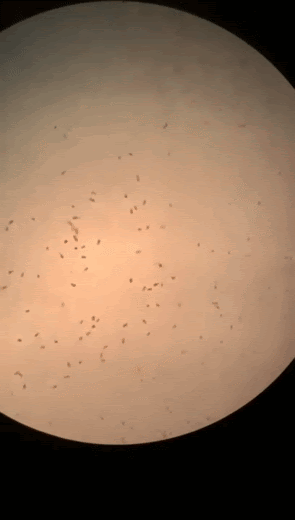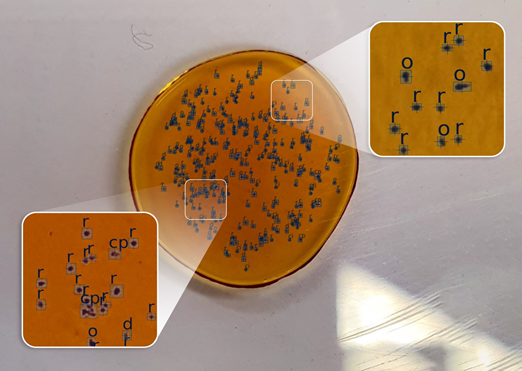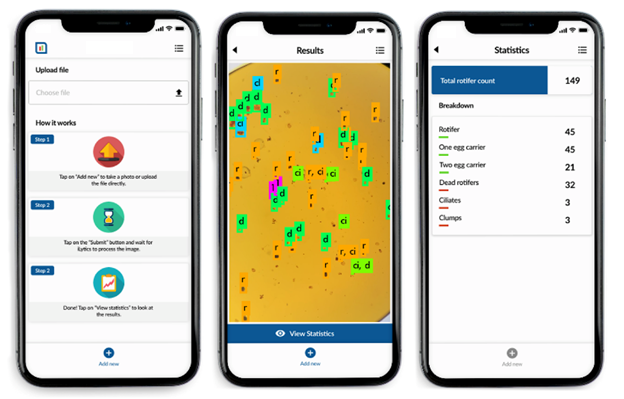How AI and a camera phone help keep food on our tables
What did you have for lunch? Chances are, most of the ingredients came from overseas as Singapore imports more than 90 per cent of its food.
But with global supply chains under stress from the ongoing pandemic, it has become all the more important to achieve Singapore’s “30 by 30” goal of producing 30 per cent of our food needs on our shores by 2030.
To hit this target, local farms will have to ride on tech to supercharge productivity – as seen in a project using AI and camera phones to improve efficiency at fish farms.
First, a primer on how fish farms work
Large scale fish production is essentially about rearing fish larvae to a size that’s ready for our dinner tables. The fish larvae feed on a type of plankton known as rotifers, which are tiny aquatic animals that are optimal food due to their diminutive size.
Ensuring an adequate supply of rotifers is a huge challenge for fish farms as fish larvae have a voracious appetite. To produce 250,000 pieces of fish fry, between three and four billion rotifers are needed to feed the requisite amount of fish larvae in the first two weeks alone! And since fish larvae need to be fed every few hours, a disruption of rotifer supply for just a single day can lead to a significant loss in harvest.
Who said eye power isn’t useful?
To prevent such a catastrophe, hatchery technicians – including Singapore Food Agency (SFA) staff – have to manually examine samples from the rotifer supply. Using a microscope, they assess the rotifers’ swimming activity, look out for contaminants such as ciliates, and implement mitigating action to improve the health of the rotifers if needed. As you can see from the images below, examining the rotifers even with the help of a microscope is no simple task and it takes one well-trained staff about 40 minutes daily to vet the samples.
 Rotifers under a microscope
Rotifers under a microscope
Given the laborious nature of the work, automation was explored but no off-the-shelf products were found. Hence, GovTech and SFA teamed up to develop a solution and turned to Artificial Intelligence (AI) to save the technicians precious time as well as from eye strain.
Which image capturing device to use?
To create a machine that could automatically examine samples, the team first had to capture images of the samples with a good balance of quality and cost effectiveness. SFA considered four different methods – a laboratory microscope; a basic student microscope; a table magnifier; and a camera phone. Based on user feedback, the camera phone was picked as it was a cheap solution that was easy to use and produced photo resolutions that were sufficient for this project.
 Image capturing devices review
Image capturing devices review
Creating intelligence
AI works by training a machine through examples. For instance, you start training a computer by showing it 1000 photos of cats and 1000 photos of dogs. Thus, when you show it a new, previously unseen photo, it can easily identify the subject of the photo and go: “Based on the photos I’ve seen in the past, this photo looks more like a cat than a dog. Aha, it’s a cat!” But crucially, each training photo has to be correctly labelled “cat” or “dog” so the machine learns to identify what cats and dogs look like.
Similarly, images captured of the rotifer sample have to be carefully annotated so the machine learns what healthy rotifers look like.
 Breakdown of the 6 rotifer classes
Breakdown of the 6 rotifer classes
So an image like this:
 Different classes of rotifers in a water sample
Different classes of rotifers in a water sample
Has to be painstakingly labelled by SFA officers who have the necessary knowledge, producing something like this:
 Rotifer classes labelled on the water sample
Rotifer classes labelled on the water sample
The team also cropped the photos so that distracting shadows in the background were eliminated. As this was a time-consuming process, it explored and succeeded in automating the cropping.
After this is done, the team separated its stash of images into two groups, one to train the machine (training images) and the other to evaluate its performance (test images). The training images were fed to the AI model so that it learns (through the labels on the images) to differentiate health rotifers from unhealthy ones.
Next, the AI model is given the test images, but without the labels on the rotifers. The AI model has to identify each rotifer from the test images, based on its earlier training. The outcomes to its identification on the test images are then compared to labels done by the SFA officers to evaluate how well the model performed. Although the machine didn’t do a good job identifying unhealthy rotifers, it fared much better in finding the healthy ones.
Based on this result, the model was rolled out to the hatchery technicians for beta testing and collection of more data for model refinement.
An instant calculator in your hands
The AI model was approved by SFA and the team went on to make a mobile app, allowing users to upload images that will be automatically assessed instantly.
 Application for rotifers counting results
Application for rotifers counting results
Instead of 40 minutes of tedious “eye-power”, all it takes now is just a minute of photo uploading to evaluate the rotifer samples. A single hatchery technician is needed to prepare the samples, photograph them, and pass the images to the machine. Besides drastically improving productivity, the SFA officers and farmers also have more time to focus on higher-value tasks.
The project was awarded the Ministry of Sustainability and the Environment (MSE) Innovation Award in 2020. Moving forward, the team hopes to expand the project to other forms of object detection such as counting and classifying small crustaceans. After all, more time saved ultimately means strengthened food security, ensuring our food shelves remain well stocked.
https://www.tech.gov.sg/media/technews/how-ai-and-a-camera-phone-help-keep-food-on-our-tables
